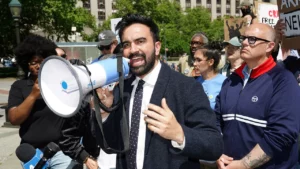
ROBERT MAGINNIS: What comes next for US, Russia and Ukraine after Alaska summit
The long-awaited meeting between President Donald Trump and Russian President Vladimir Putin at Joint Base Elmendorf–Richardson in Anchorage, Alaska, has concluded with warm words but no concrete agreement. The talks were described by both leaders as “constructive” and filled with a tone of mutual respect. However, the reality on the ground shows that the war in Ukraine did not stop with the meeting.
In fact, Russian forces continued to press forward near Dobropillia in Donetsk region, testing Ukrainian defenses in what appears to be an attempt to gain a tactical advantage before any potential pause. Ukraine has responded by rushing reinforcements and stabilizing its lines for now, but fighting remains intense.
Despite the lack of a deal, both Trump and Putin left Alaska with a clearer understanding of the negotiating terrain, buying time for positioning. However, it is crucial that this meeting does not become a bridge to nowhere, as any ceasefire talks must be backed by ironclad verification: neutral observers on the ground, satellite surveillance, clearly mapped lines, and automatic “snap-back” sanctions for violations.
For the United States, holding firm on sanctions while bolstering Ukraine’s defenses would ensure that any potential deal is not merely a temporary pause in hostilities. It is crucial to treat any ceasefire as the beginning of a rigorous verification process, rather than its conclusion.
Ukraine must prepare for two divergent paths: meaningful diplomacy or intensified conflict. If the West refuses to pay a premium for Ukraine’s sovereignty, Putin may decide that continued war is no longer worth the mounting cost.
For Russia, the Alaska summit has reaffirmed that any deal must not come at the expense of its territorial gains and economic pressures on its war machine.
The U.S., Ukraine, and Russia must now navigate the implications of this meeting.
Source: www.foxnews.com


